Marches. Boycotts. Campaigns. Sit-ins. Rallies.
Collectively and individually, women throughout history have continued to assert their right to self-determination. In some cases, the refusal to hide who they were was, in itself, a radical act. Below is a sample of the rich history of activism from generations of women in New York.
OPRHP Sites & State and National Registers of Historic Places Listed Sites:
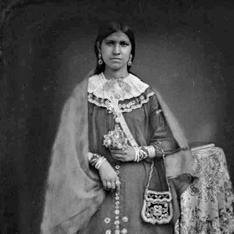
Ganondagan State Historic Site ,
Victor: Haudenosaunee women lived in a society that afforded them a level of equality and freedom centuries before similar rights were given to other women in the United
States. Seneca, Cayuga, Onondaga, Mohawk, and Oneida women chose their chiefs, owned and managed property, and held key political positions. When women in New York State began to organize to demand
their rights, the Haudenosaunee provided a model of equality.
,
Victor: Haudenosaunee women lived in a society that afforded them a level of equality and freedom centuries before similar rights were given to other women in the United
States. Seneca, Cayuga, Onondaga, Mohawk, and Oneida women chose their chiefs, owned and managed property, and held key political positions. When women in New York State began to organize to demand
their rights, the Haudenosaunee provided a model of equality.
Ganondagan State Historic Site is the only historic site in the U.S. dedicated to the interpretation of the culture, art, and government of the Seneca people.
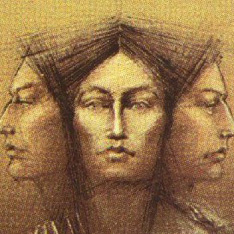
Johnson Hall State Historic Site, Johnstown: Known at different times of her life as Konwatsi'tsiaienni and Degonwadonti, Molly Brant (1736-1796) was a Mohawk woman likely born around 1736 and grew up in Canajoharie, New York. By the age of 18, Brant was already beginning to participate in local politics and likely met Sir William Johnson as she interacted with leaders in the area. Eventually, she and Johnson became romantically linked, and Brant had eight children with him while living at his estate, Johnson Hall. She spoke Mohawk and English fluently and dressed in the Mohawk style all her life. After Johnson's death, Brant returned to the Mohawk and led as a Clan Mother during the turbulent Revolutionary War period. Read more about her life:
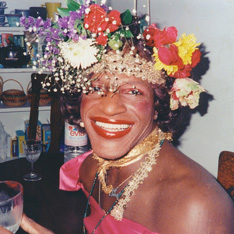
Marsha P. Johnson State Park, New York City: Marsha P. Johnson (1945-1992) was a transgender woman of color and a prominent figure of the LGBTQIA+ movement in New York City in the 1960s and 1970s. She is known for her involvement in Stonewall and her advocacy for LGBTQIA+ rights, youth experiencing homelessness, and people impacted by H.I.V. and AIDS. Marsha P. Johnson State Park, formerly East River State Park, was renamed in 2020.
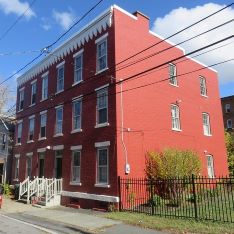
Kate Mullany National Historic Site ,
Troy: Kate Mullany (1845-1906) immigrated from Ireland to Troy and worked as a laundress. Mullany is best known for organizing 200 women in 1864 to create the first all-female labor union in the country,
the Collar Laundry Union. She later became the first elected woman in the National Labor Congress. The Kate Mullany House at 350 Eighth Street in Troy is nationally significant as the residence of one of America's leading female labor leaders.
,
Troy: Kate Mullany (1845-1906) immigrated from Ireland to Troy and worked as a laundress. Mullany is best known for organizing 200 women in 1864 to create the first all-female labor union in the country,
the Collar Laundry Union. She later became the first elected woman in the National Labor Congress. The Kate Mullany House at 350 Eighth Street in Troy is nationally significant as the residence of one of America's leading female labor leaders.
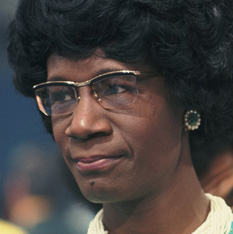
Shirley Chisholm State Park, Brooklyn: Shirley Chisholm (1924-2005) was a Barbadian American women's rights and civil rights activist from Brooklyn. Chisholm became the first Black Congresswoman in 1968 and represented New York's 12th congressional district in Bedford-Stuyvesant. In 1972, she became the first Black woman to run for president. Shirley Chisholm State Park is located in Brooklyn.
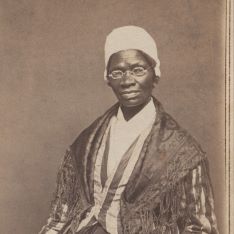
Sojourner Truth State Park, Kingston: Sojourner Truth (1797-1883) was an abolitionist, suffragist, and orator who escaped from enslavement in 1826. Truth became a public figure who was moved by her faith to speak out about her experience as both a women and a formerly enslaved person. Sojourner Truth State Park brings her story to visitors, allows for interpretation of the site's industrial and indigenous history, and helps protect the ecology of the Hudson River.
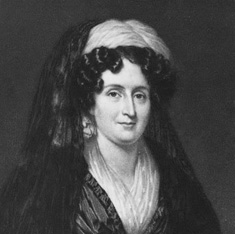
Emma Willard School ,
Troy: Emma Willard (1787-1870) was a women's education activist and founded Troy Female Seminary, now known as the Emma Willard School, in 1821. It was the first higher education institution for women in the country. Today, the National Register-listed school continues to serve as a college-preparatory and day school for girls.
,
Troy: Emma Willard (1787-1870) was a women's education activist and founded Troy Female Seminary, now known as the Emma Willard School, in 1821. It was the first higher education institution for women in the country. Today, the National Register-listed school continues to serve as a college-preparatory and day school for girls.
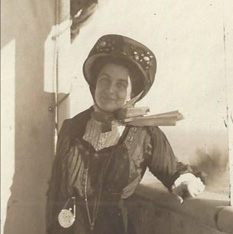
Bronxville Women's Club ,
Bronxville: Anna Lawrence Bisland (1874-1950) founded the Bronxville Women's Club in 1925 after gathering representatives of organizations and enrolling 176 members. Today, the club runs within the Anna Lawrence Bisland 1925 House, which is on the National Register of Historic Places. The club is membership-based, open to all, and committed to educational, cultural, health, and art programs.
,
Bronxville: Anna Lawrence Bisland (1874-1950) founded the Bronxville Women's Club in 1925 after gathering representatives of organizations and enrolling 176 members. Today, the club runs within the Anna Lawrence Bisland 1925 House, which is on the National Register of Historic Places. The club is membership-based, open to all, and committed to educational, cultural, health, and art programs.
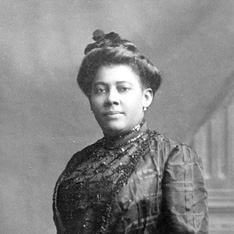
Michigan Street Baptist Church ,
Buffalo: Mary Talbert (1866-1923) The Michigan Street Baptist Church was once the last stop on the Underground Railroad for enslaved people who were traveling north into Canada and later became a prominent symbol of the modern Civil Rights movement. Mary Burnett Talbert, a neighbor and active parishioner of the church, was an American orator, activist, suffragist, and reformer who was inducted into the National Women's Hall of Fame in 2005.
,
Buffalo: Mary Talbert (1866-1923) The Michigan Street Baptist Church was once the last stop on the Underground Railroad for enslaved people who were traveling north into Canada and later became a prominent symbol of the modern Civil Rights movement. Mary Burnett Talbert, a neighbor and active parishioner of the church, was an American orator, activist, suffragist, and reformer who was inducted into the National Women's Hall of Fame in 2005.
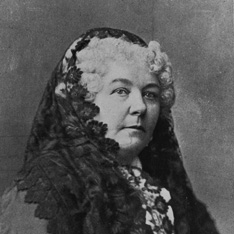
Elizabeth Cady Stanton House ,
Seneca Falls: Elizabeth Cady Stanton House (1815-1902) The Elizabeth Cady Stanton House, operated today as a museum by the National Park Service, was one of the leaders of the women's rights movement in the 19th century. While living in Seneca Falls, Stanton
met with Lucretia Mott, and together, held the nation's first women's rights convention. Here, Stanton first advocated for women's suffrage, in her Declaration of Sentiments.
,
Seneca Falls: Elizabeth Cady Stanton House (1815-1902) The Elizabeth Cady Stanton House, operated today as a museum by the National Park Service, was one of the leaders of the women's rights movement in the 19th century. While living in Seneca Falls, Stanton
met with Lucretia Mott, and together, held the nation's first women's rights convention. Here, Stanton first advocated for women's suffrage, in her Declaration of Sentiments.
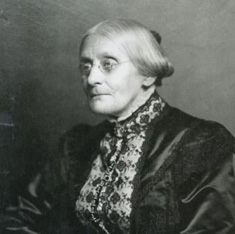
Mount Hope Cemetery ,
Rochester: Susan B. Anthony (1820-1906): Established in 1838, the sprawling, Victorian-designed, Mount Hope Cemetery was the first municipal cemetery in the United States. It has since become the final resting place for several prominent figures of transcendent
importance including women's rights advocate Susan B. Anthony.
,
Rochester: Susan B. Anthony (1820-1906): Established in 1838, the sprawling, Victorian-designed, Mount Hope Cemetery was the first municipal cemetery in the United States. It has since become the final resting place for several prominent figures of transcendent
importance including women's rights advocate Susan B. Anthony.
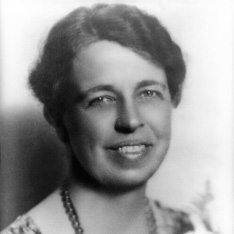
Eleanor Roosevelt National Historic Site ,
Hyde Park: Eleanor Roosevelt (1884-1962) Val-Kill (Eleanor Roosevelt National Historic Site), more than any other residence, was the home of First Lady Eleanor Roosevelt from 1924 until her death in 1962. Later in life, Roosevelt said, "At Val-Kill I emerged as an individual".
After President FDR's death in 1945, Val-Kill became her principal home and where she emerged as a prominent woman of American politics.
,
Hyde Park: Eleanor Roosevelt (1884-1962) Val-Kill (Eleanor Roosevelt National Historic Site), more than any other residence, was the home of First Lady Eleanor Roosevelt from 1924 until her death in 1962. Later in life, Roosevelt said, "At Val-Kill I emerged as an individual".
After President FDR's death in 1945, Val-Kill became her principal home and where she emerged as a prominent woman of American politics.
Additional Resources
Below are links to learn more about notable women in New York's Suffrage Movement
- Matilda Joselyn Gage

- Harriet Tubman

- Sojourner Truth

- Madam C.J. Walker

- Mary Talbert

- Dr. Mabel Ping Hua-Lee

- Inez Milholland

- Susan B.Anthony

- NYS Museum's NY Minute in History podcast, Episode 2: Women's Rights Movement: From Seneca Falls to Today

- NYS Museum's Votes for Women Exhibition

- National Park Service article: Between Two Worlds: Black Women and the Fight for Voting Rights

- Association of Black Women Historians

- Suffrage Centennials

- Equal Right Heritage Center

- 2020: Project Women

- An illustrated book celebrating the history of American women's suffrage and the iconic 1915 New York City women's march, as told in rhyme by a grandmother to her granddaughter at bedtime: March On !

League of Women Voters of NYS
To honor the women suffragists and the movement, exercise your right to vote. Follow the link below to learn more about what is required to register.
New York Board of Elections
